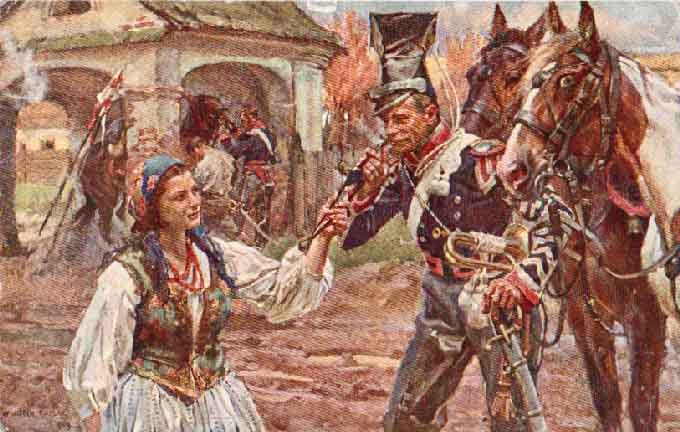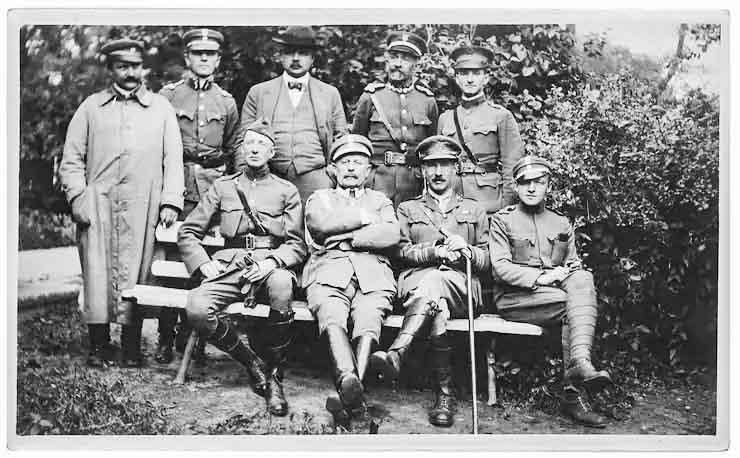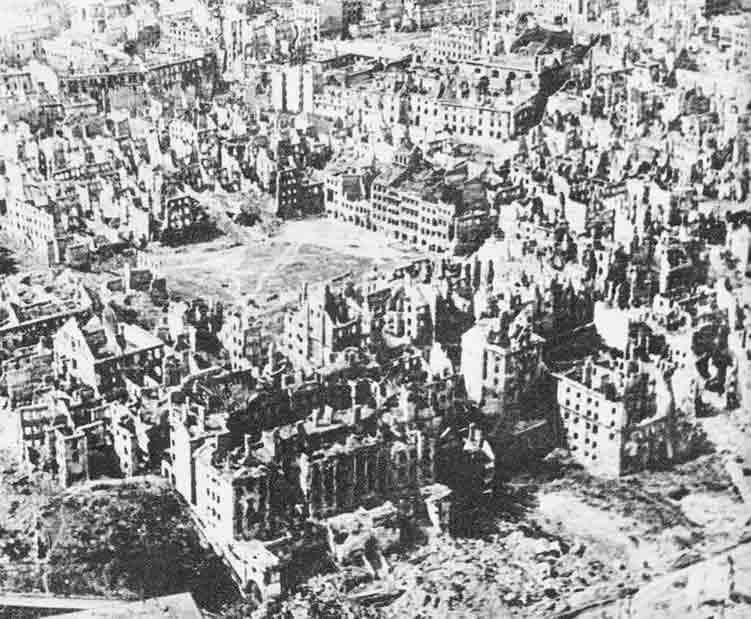The first American ambassador to Poland after the war was Arthur Bliss Lane (June 16, 1894 – August 12, 1956). He came to ruined Warsaw in July 1945. The ambassador had already visited Poland before: in 1919, after Poland regained independence, and the second time in 1937, when Warsaw was one of the most beautiful capitals of Europe.
Warsaw after the war
Now, three months after the war, he saw Warsaw completely razed to the ground. The Germans' final revenge for the Warsaw Uprising in 1944 systematically destroyed the city house-by-house, with the help of flamethrowers. The day before, the ambassador had been in Berlin and now understood that the destruction he saw there was nothing compared to what the Germans had done in Warsaw. An architectural jewel, the Blue Palace, owned by Maurycy Zamoyski and home to the American Embassy in 1919, has been reduced to a heap of rubble.
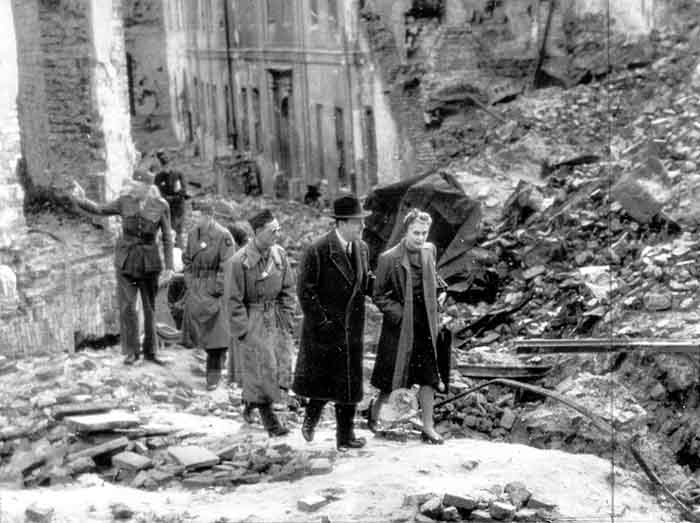
Ambassador Bliss Lane in Warsaw in 1945 (Source: Wikipedia)
Every day military convoys rolled through Warsaw towards Russia. They were mainly horse-drawn carts filled with goods. The Russians looted cattle, furniture and other goods. They dismantled factories and took the machines to Russia.
It was pleasant and comfortable in the Polonia Hotel, where diplomatic representations were now housed, but outside one could see ill-dressed people, hunger, disease and cold.
Hundreds of people came to the American Embassy expressing their desire to go to the USA. Some claimed US citizenship, others that they were born or naturalized in America, and others simply wanted to leave as soon as possible. The problem was that they had to get their passports first. The Polish government allowed the emigration of Poles in very few cases, unless they were of Jewish descent.
From the very beginning, the work of the embassy was hindered by the communist security services. It was agreed in Potsdam that "representatives of the Allied countries will enjoy full freedom in providing information about events in Poland..."
Despite this, telegrams sent to America traveled via Moscow. Embassy staff were prevented from seeing arrested American citizens, in violation of the 1931 treaty between Poland and the United States.
In August 1945, the ambassador presented Bierut with a proposal for American economic assistance. It contained the following points:
1. Extension of UNRRA assistance
UNRRA ( United Nations Relief and Rehabilitation Administration ) was an international organization, but the US government funded 72% of its activities. This activity was supposed to start in October 1944, but UNRRA representatives did not receive entry visas to the territories occupied by the Soviet army. The Russians also did not allow supplies to be sent to Poland through the Black Sea ports. Despite Ambassador Lane's protest, a Russian named Menshikov was appointed head of the first UNRRA mission in Poland. The first ship to deliver UNRRA goods was the USS Nishmaha, which arrived in Gdynia on September 6, 1945.
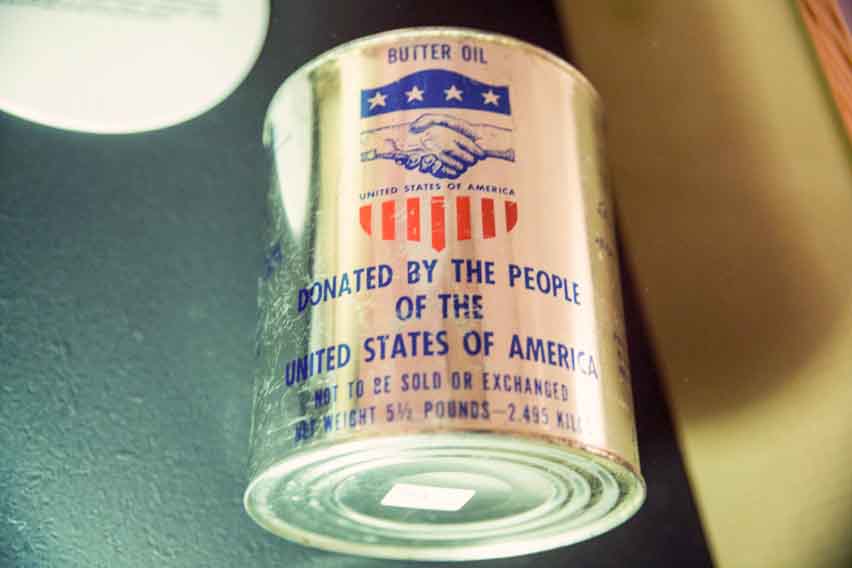
UNRRA food can in aid to Poland (Source: Wikipedia)
Gdynia was heavily bombed from the sea in September 1939. Gdańsk was almost as destroyed as Warsaw. Here, too, the Germans demolished house after house. They did not even spare the Gothic church of St. Elizabeth, one of the most beautiful religious buildings in Northern Europe.
In Gdańsk, the American delegation was shown a macabre soap factory and a manufactory of lampshades made of human skin. The UNRRA deliveries gave Poles hope to improve their living conditions. However, the agreement with the Polish government deprived UNRRA of control over the distribution of goods. The deliveries were used for political purposes and some goods were received only by holders of special cards issued to government employees or members of the PPR and PPS (the merger of these parties later created the PZPR in 1948).
UNRRA supplied groceries, food parcels from military supplies, medicines and medical supplies, clothing, horses, construction and agricultural machinery, steam locomotives, railway cars, tractors, trucks and more.
Poles were not used to certain items, such as orange juice, so they sold it to buy more necessary items. Cans of food appeared in stores at enormously high prices and were traded.
However, despite these irregularities in the distribution of goods, the aid outweighed the negative effects of the fraud. This help from the United States, Sweden, Switzerland and Great Britain also contributed to the feeling of bonding with the West among Poles.
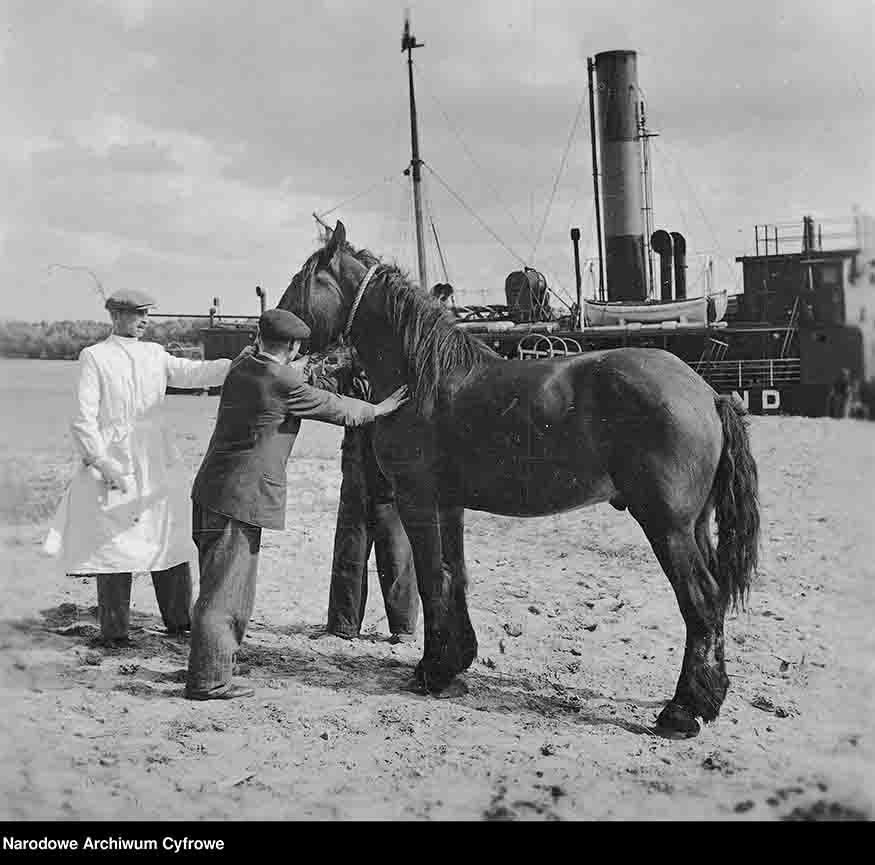
American aid reaches Poland (Source: National Digital Archive/Wikipedia)
Although UNRRA was active in the world until September 1948, in mid-1946 the Polish communist authorities, under pressure from the USSR, withheld its aid, treating this organization as a form of US interference in Poland's sovereignty.
2. Export of Polish coal
The use of Polish coal exports from Silesia to France and Italy, for which these countries were to send their market products to the USA. In this way, a dollar balance was to be created for Poland in New York.
3. Granting financial loans to Poland
In November 1945, the vice-president of the council of ministers, Stanisław Mikołajczyk, representing the Polish People's Party, met with President Truman at the White House to explore the possibility of obtaining an American loan. As a result, on April 27, 1946, the United States granted Poland a loan of USD 90 million, including USD 50 million for the purchase of surplus equipment and USD 40 million for the purchase of locomotives and coal wagons.
Ambassador Lane argued against granting this loan in order not to support the communist government of Poland, but this did not change the decision of the US administration.
4. War supplies from military surplus for Poland
The Americans lamented that they could not provide this kind of aid on a large scale. After the end of the war with Germany, there were no legal grounds to provide assistance to Poland under the "Lend-Lease" programme. Instead, they wanted to deliver, of course, for a fee, 1,000 trucks from France to Poland, coming from surplus American war materials.

American equipment as part of aid for Poland (Source: Narodowe Archiwum Cyfrowe/Wikipedia)
5. German compensation for Poland
An envoy from President Truman was in Moscow to discuss these matters. Pursuant to the agreement of the Potsdam Conference of July 1945, the part due to Poland was to be separated from the compensation received by the Russians from the Germans.
6. Talks on a new trade treaty
Private trade between the United States and Poland was to be opened based on the "Treaty of Commerce, Friendship and Consular Rights" of 1931, which continued to have legal force. Despite this, the Minister of Foreign Affairs, Wincenty Rzymowski, told the ambassador that the treaty was outdated and no longer applicable.
7. Mutual exchange of experts
They urged that experts on financial and economic matters be sent to America as soon as possible. These experts were to make contact with the US government regarding the reconstruction of the country.
The ambassador met with the Minister of Education, Czesław Wycech, a member of the PSL, who told him how the Germans had murdered all outstanding scientists and university teachers, burned all the works that maintained Polishness, and transported to Germany or destroyed all the laboratories.
In December, scholarships were offered to the United States for 50 Polish students who were to specialize in various fields. Unfortunately, almost all those who applied were refused passports by the Ministry of Foreign Affairs.
In Warsaw, a public library was opened in a wooden barrack, where Poles could read American magazines and books, but the Security Service warned not to come there.
The launched Voice of America radio station was not popular among Poles, because the broadcasts consisted mainly of stories about the wonderful life in the States. This showed a complete lack of understanding of Poles' feelings after six years of Nazi occupation.
8. Help from the American Red Cross.
Despite the difficulties, the American Red Cross began to operate unofficially in February 1944, when its representative, Donald Castleberry, arrived in Poland without an entry visa. He obtained legal assistance from the Polish Red Cross responsible for the distribution of drugs and medical equipment. The staff of this Polish organization was gradually replaced by people with communist views, without any professional training.
Two other organizations, the National Catholic Welfare Conference and the Committee for American Aid to Europe, known as CARE, also helped Poles by providing food and clothes. Despite the politicization of the distribution of goods, these actions gave many benefits to Poles.
Rebuilding the Economy
The program of economic reconstruction of Poland was developed under the leadership of the Minister of Industry of the Provisional Government, Hilary Minc, in the autumn of 1945.

Hilary Minc in 1950 (Source: Wikipedia)
Ambassador Lane met him in September 1945. Minc presented him with the tragic situation of the country and the huge devastation in industry, agriculture and infrastructure:
Machines were taken from the textile factories in Lodz by the Germans. The factory in Bialystok was also completely destroyed. In Poland, there was a shortage of cotton for the production of clothes, the lack of which was very painfully felt by people.
The Germans razed the ports of Gdańsk and Gdynia to the ground and destroyed the port facilities. It was an urgent necessity to restore the functioning of trade, and cranes and other port facilities were needed for this.
Large amounts of grain and cattle were taken by the Red Army. One of the most important issues was to start rail transport as soon as possible and purchase rolling stock to transport coal from Silesia, which was to help rebuild the country.
The situation in agriculture was appalling. Draft animals and seeds were in short supply. Before the war, pig farming was the main source of exports to the United States. Everything was plundered and destroyed by the Germans.
Grain shortages
At the end of February 1946, it turned out that Poland had huge shortages of grain, which could threaten with famine. Grain shortages at the time were felt worldwide and UNRRA was forced to reduce supplies to Europe. Gomułka's government believed that America was deliberately cutting food supplies to Poland to force the government to change its political stance.
On February 23, 1946, during a reception at the Soviet Embassy, Ambassador Lebedev and Deputy Prime Minister Gomułka handed over to Ambassador Lane a complaint that UNRRA was cutting food supplies to Poland and warned that if the Americans did not help Poland, the Soviet Union would. Lebedev added that the delivery of 200,000 tons of grain from Russia to Poland is underway. It was a perfidious, cynical statement, because a few months earlier the Red Army had seized 200,000 tons of Polish grain.
On March 28, 1946, former US President Herbert Hoover paid a visit to President Bierut to investigate the problem of food shortages in Poland. America has offered help on this issue as well as on health care. Hoover suggested introducing food rationing, but the Polish government rejected it, claiming that Poles had become accustomed to disobeying any regulations during the occupation.
In the autumn of 1946, Poland again faced grain shortages. The American side decided that Poland already has enough of it. Ambassador Lane drew attention to the discrepancy in the assessment of Polish and American experts on this matter, but American experts told him that a similar situation has arisen in all countries of Central and Eastern Europe and that the governments of these countries calculate cereal stocks at a much lower level than the Americans.
Election rigging
The long-postponed elections in Poland took place on January 19, 1947. The communist government needed time to eliminate and intimidate the opposition and independence movements in the country. Mass arrests and deportations continued. Members of the Home Army were particularly severely repressed. Former German concentration camps such as Auschwitz, Rembertów near Warsaw and Dürrgoy in Wrocław were overcrowded. The whole country was screaming. The militia and ORMO dispersed rallies and destroyed the buildings of the opposition parties, PSL and PPR. Ambassador Lane informed the American government about the progressing Sovietization of Poland. He sent his reports to Washington. In them, he wrote that Poland's independence was under threat and proved that the parliamentary elections had been rigged.

Cover of the first issue of Ambassador Bliss-Lane's report (Source: Wikipedia)
Immediately after the elections in Poland, Ambassador Arthur Bliss Lane resigned from his post as a protest against the betrayal of Poland by Western states. President Franklin Delano Roosevelt had previously assured that America would support a strong and free Poland. He did not keep his promises and harsh power was imposed on Poles by Russian and Polish communists.
Already in Tehran in 1943, English Prime Minister Churchill and American President Roosevelt agreed to the annexation of the eastern part of Poland by Russia. Both believed that the interests of their countries required us to be sold to Russia. This decision by Roosevelt was kept secret until the end of the 1944 US presidential election.
The Yalta Conference in February 1945 finally buried the hopes of Poles for independence and democracy. The American policy of concessions to Russia encouraged Stalin to carry out plans to completely subjugate Poland.
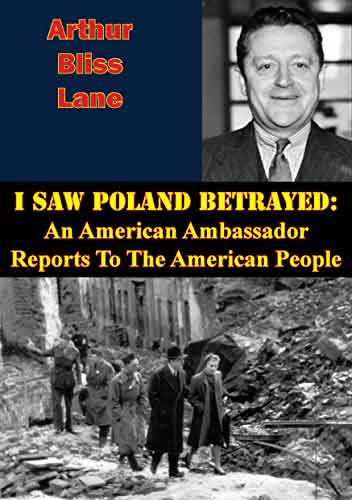
Cover of a modern edition of Arthur Bliss Lane's book. (Amazon)
Hundreds of thousands of Poles were displaced from former Polish lands. The Russians allowed the Germans to suppress the Warsaw Uprising in 1944 and 250,000 Poles died. One third of Poland's territory was seized by the Soviet Union and no one in the world protested.





